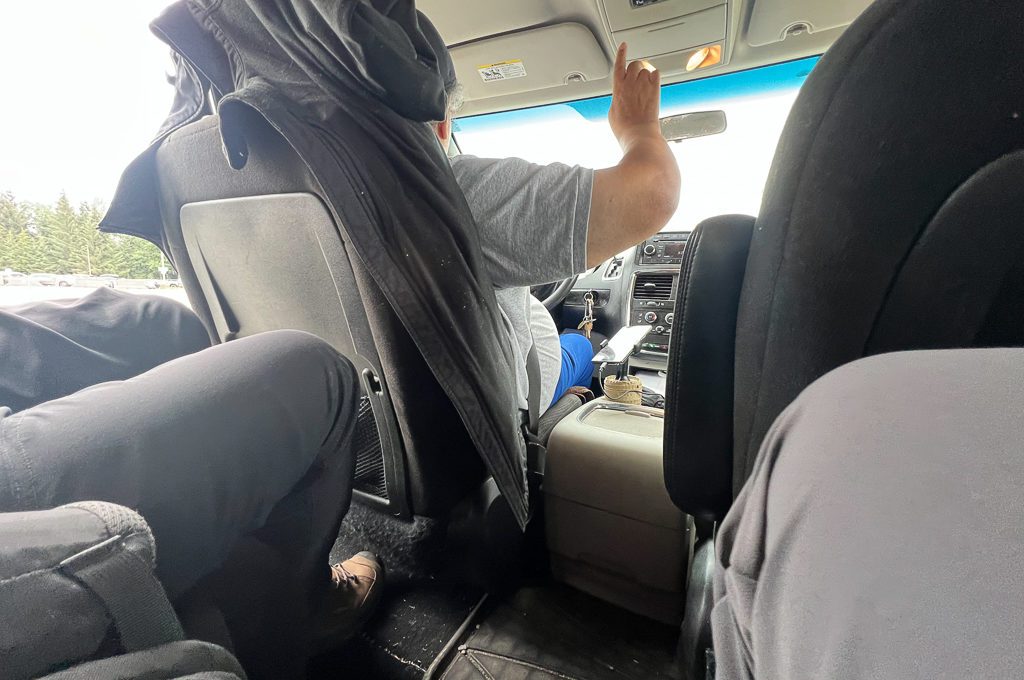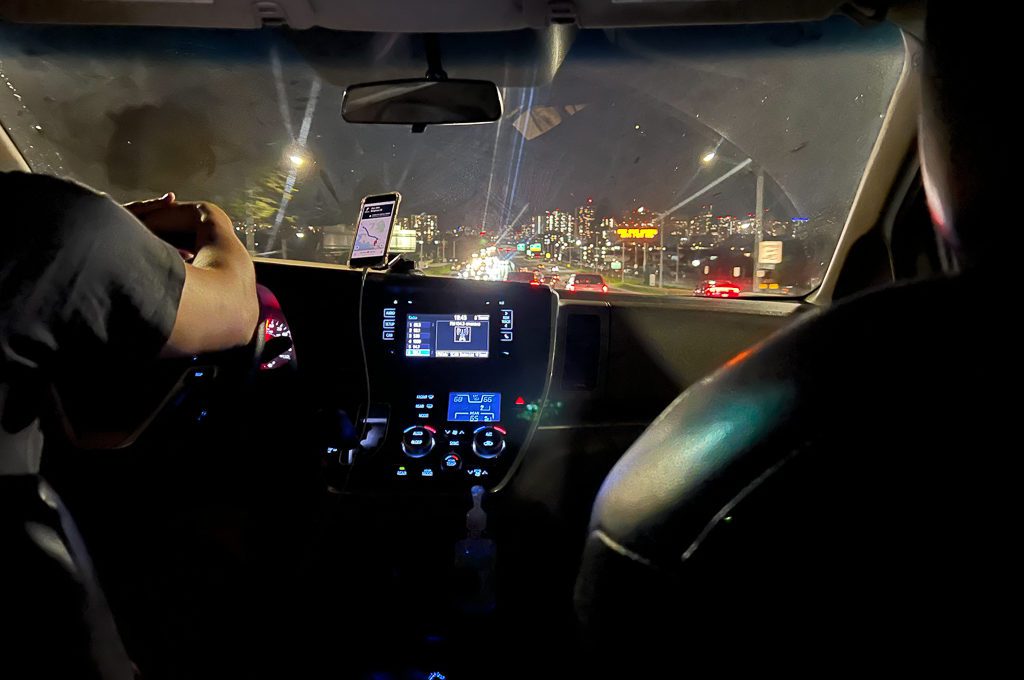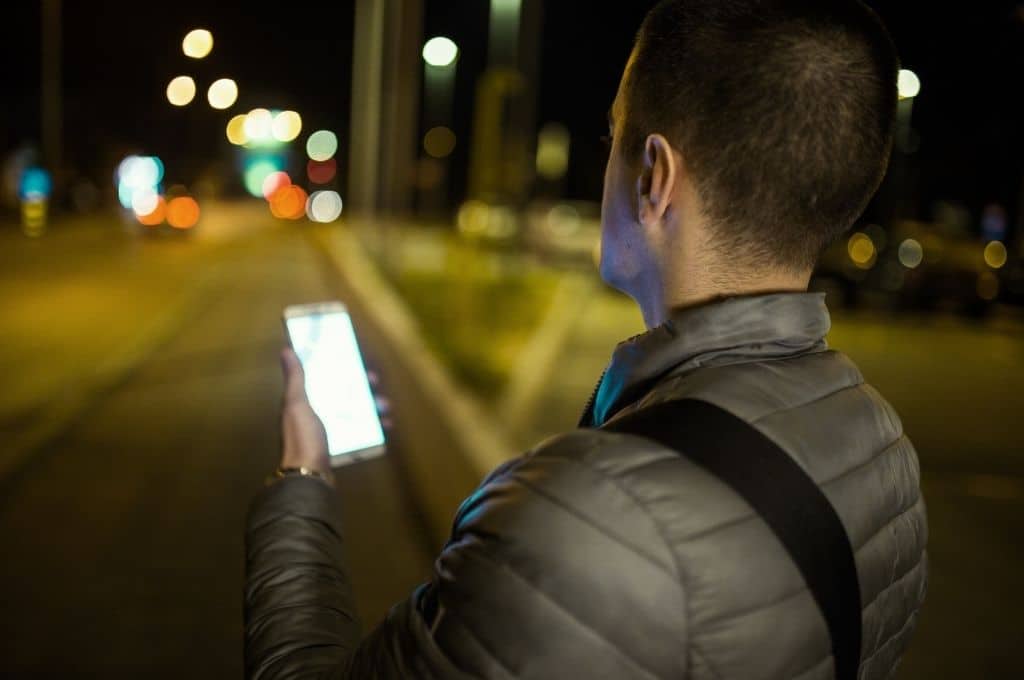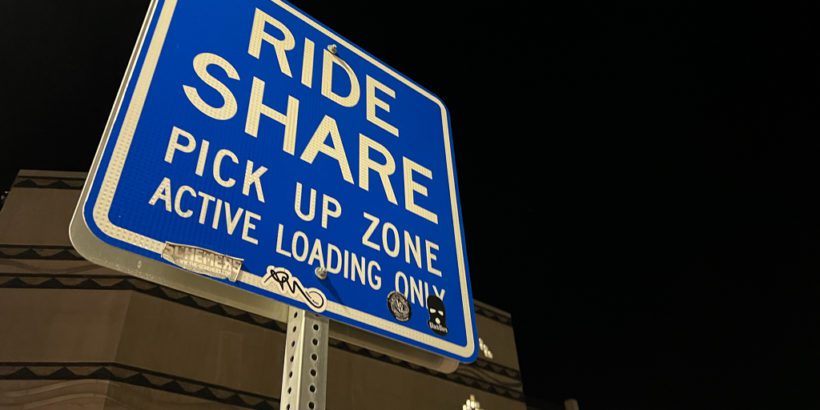There are no shortage of scams in the travel industry that’s for sure.
And as successful as ride sharing has been, there is always a concern for safety for both drivers and passengers.
One ride share scam that has gotten a lot of attention is the “say my name” scam. But what exactly is the scam and what should you know about it?
Below, I will break down the origins of the scam and what it has developed into today as well as offer up some solutions to the problem.
Table of Contents
Uber say my name scam (dark) background
The Uber say my name scam comes from the heartbreaking story of Samantha Josephson, a student at University of South Carolina.
In March of 2019, she mistakenly got into a car that she believed to be her Uber and ended up getting murdered. It was a brutal attack and the defender is currently serving a life sentence for his actions.
This understandingly prompted a movement where passengers became more conscious about their safety when getting into ride share vehicles. Legislation has also followed.
One of the pushes of the movement was to ask for Uber drivers to say the name of the passenger when picking them up.
The idea is that a random criminal on the street would not know the name of the passenger (like a registered Uber driver would) and so the risk of getting in with someone dangerous would be mitigated by forcing them to say your name.
Unfortunately, this has the potential to backfire.
You see, scammers recognized that if they could get an Uber driver to say a name, they could then impersonate another person and get a free ride (or do something much worse).
For example, this is how it would go:
- Uber driver pulls up
- Passenger: “Say my name”
- Driver: “Daniel”
- Scammer: “yep, that’s me”
- Driver: “Okay, cool get in”
In this situation, the Uber driver cannot only get a bad rating for picking up the wrong person but they could end up wasting their time and losing money by driving someone around who does not have to pay for anything.
So what developed is a situation where we were forced to balance the safety of passengers with the safety of drivers.
As you could probably imagine, this has developed into a disagreement on who should offer up what information and when for the sake of safety and protection.
A passenger may want an Uber driver to say their name because a random criminal would not be able to instantly verify their name (in most cases).
On the other hand, an Uber driver would not want to give out the name of a passenger first because a passenger could agree to be anybody.
This has led to some say my name scuffles (parody).

What does Uber say about this?
Uber offers guidance on how drivers and passengers should interact at the beginning of a ride. Unfortunately, they don’t offer 100% clarity but they do have some helpful tips.
For their rider safety tips they state:
Every time you take a trip with Uber, please make sure you’re getting into the right car with the right driver by matching the license plate, car make and model, and driver photo with what’s provided in your app…. you can also ask the driver to confirm your name before you get in the car.
Uber clearly is okay with passengers asking the driver to confirm their name before they get in the vehicle. So that is in line with the say my name philosophy.
However, they do go on to mention that as a driver you can “feel free to ask riders to confirm your name before entering your vehicle.”
This to me is the key to solving the problem.
Related: Is Uber Available 24/7?

The solution to the say my name problem
I personally think there is a very simple solution to the problem of balancing drivers getting scammed with passenger safety.
One solution could be for Uber to require passengers to verify rides with a pin number (this is currently an optional feature).
But even if these pins never get widespread adoption in the US, there is still a pretty simple solution.
The solution is that the driver should require the passenger to verify the driver’s name before the passenger enters the vehicle. In other words, the driver would just ask, “What driver are you waiting for?”
The passenger will have the driver’s name in the app and will therefore be able to verify that name unlike a potential scammer.
As far as the passenger goes, they now have plenty of information to go on in order to verify the driver for their safety. For example, they are given the make and model, color, the license plate, and they can also see a photo of the driver. I believe you can also make a phone call to the driver (although you don’t see their real number).
All of the information above is more than enough to verify that you are getting into the correct vehicle.
If for some reason the vehicle details do not completely match up or the photo does not match, then the passenger should simply refuse the ride, just as Uber recommends.
So the ideal exchange when using a rideshare should go like this:
- Rideshare driver pulls up
- Passenger verifies the make model and license plate (walks around to back of car if needed) and then takes a peek at the driver to make sure the driver matches with the photo in the app
- Driver keeps all doors locked and rolls down the window
- Driver: “Are you Daniel?”
- Passenger: “Yeah, that’s me.”
- Driver: “Can you confirm the name of the driver you are waiting on?”
- Passenger: “Yep, the name is Lauren”
- Driver: “and can you confirm your destination?”
- Passenger: the “Westin Downtown”
- Driver unlocks doors and lets passenger in
In this scenario, the passenger was able to verify several things.
First, by verifying the make and model of the vehicle along with the license plate, they ensure that the vehicle they are stepping into is registered with Uber and is the same vehicle that was selected for the trip.
By verifying the appearance of the driver they could verify that this is in fact the correct registered Uber driver and not some psychopath who car jacked a vehicle or some other rando.
And finally by having their name verified, they get verification that this driver likely has access to the Uber app as a driver.
The driver was also able to verify several things.
They verified that the passenger had access to the driver’s name which means that they either booked the Uber or someone had it booked for them. On top of that, the driver confirmed the destination which a random scammer would not know.
In other words, the driver knows that this is the correct passenger before they ever let the passenger into the vehicle.
When you break it down like the above, you see that getting the driver to say the name of the passenger is probably the least valuable type of verification available.
Saying the passenger’s name is still helpful to make sure that the driver is picking up the right person and it can offer the passenger a bit more assurance but in terms of passenger safety, the other verifiable factors are what the passenger should focus on.
This is especially true when you consider how easy it would be for someone to find out your first name if they really wanted to. For example, a stalker could easily obtain a first name and follow someone that they know utilizes ride shares.
They could wait for that person to call an Uber and then jump in their car parked around the corner, pull up in a vehicle posing as an Uber driver (e.g., fake placards), and make someone feel “secure” by verifying the first name.
But if the passenger is primarily focused on the other details found in the app, they would not be fooled by the imposter.
As for the protection of the driver….
The key for the driver will be to make sure that the passenger cannot see the driver’s name in the app or on the screen in their vehicle before the driver can verify what driver the passenger is waiting on.
But if a driver verifies who the passenger is waiting on and where they are going, it seems to me that this is a pretty solid solution to the problem of the scam.
The main problem with this would be with third-party bookings.
For example, someone can book a ride for someone else and not relay all of the vehicle/driver details. This is why it’s really important that you send all the details you can if you book an Uber for someone else! It’s a safety issue.
Some passengers also may be annoyed that they are being asked questions about the destination and name of the driver. But if you can explain that the questions are for verification/security purposes, they may be more willing to comply.
Related: How Much Does Uber Charge Per Mile?

How common is the scam really?
Once you break down what this scam is, you start to wonder how common or feasible is this scam?
If it’s a scam where it is just a scammer randomly waiting to take advantage of an Uber driver, that’s a pretty risky position for the scammer because they don’t know the final destination.
A driver could easily take them way to the outskirts of town and then they would be forced to find a way back, which could be pricey.
I suppose the scammer could request for the driver to make a change on the destination but the driver should know to tell the scammer that all changes must be made with the passenger’s app.
It’s possible that the scammer could then tell the driver that their phone is dead or not working and so they cannot modify the reservation.
But again, at that point, there is little guarantee for the scammer that this will work out for them.
They will have to rely on the Uber driver to agree to make a modification outside of the app. Some might agree to that but many experienced drivers will just cancel the trip. If the trip is canceled, the scammer could then be left stranded, SOL.
I’m not saying that people are not trying this — I’m sure there are plenty. But it really seems like a high risk, low reward scenario that savvy scammers typically wouldn’t go for on the regular.
Of course, somebody could also have more sinister intentions and just use the opportunity as a way to get into your vehicle and then do something crazy like hold you at gunpoint, etc.
Another version of this scam could involve multiple individuals.
One person orders the ride for another person who claims to be the right passenger by verifying a name that does not belong to them. In this scenario the scammer would know the destination so it would be more worthwhile.
But the scamming passenger would also know the driver’s name so I’m not sure how you could prevent this from happening. Of course, Uber could track this type of activity and shut down accounts that show patterns of this behavior and I’m sure they do.
But this is sort of a different type of scam altogether.
Final word
The say my name scam comes from a horrific event that I don’t want to undermine in any way. They’ve built an entire foundation dedicated to spreading safety about using ride shares which I’m sure has brought about a ton of valuable awareness.
But based on the details that passengers receive about drivers, I’m not sure name verification is such a valuable security feature. I certainly wouldn’t rank it at the top.
It seems that verifying the make and model, license plate, and the photo of the driver is much more valuable information.
And as for drivers, as long as they can keep a passenger from visibly seeing their name, all they have to do is ask the passenger to verify who they are waiting on and/or what the destination is, and that should mitigate the risk of many scammers.
But I don’t think drivers should be hesitant to say someone’s name.
Daniel Gillaspia is the Founder of UponArriving.com and the credit card app, WalletFlo. He is a former attorney turned travel expert covering destinations along with TSA, airline, and hotel policies. Since 2014, his content has been featured in publications such as National Geographic, Smithsonian Magazine, and CNBC. Read my bio.


Uber has a feature for this https://help.uber.com/riders/article/whats-verify-my-ride/?nodeId=2ddbb5e8-0dd3-4048-b9ee-f6b5e5311e25
Yeah, I made quick mention of it but the problem is it’s optional. Lots of people don’t even know about it, I’m sure.
Driver arrives at pick up address.
Rider confirms car make, model,
color, and license plate number.
(Info on rider’s app)
Driver: “I’m James.”
(‘James’ is on rider’s app).
Rider: “I’m Mark.”
(‘Mark’ is on driver’s app).
Mark gets in the car.
James confirms the destination.
Mark confirms that.
A successful Uber ride!
Rider confirms driver info.
Driver confirms rider info.
A very simple process.